How to Increase Productivity and Manage Multifaceted Tasks for Your Team
If you want to improve profits and create a more well-rounded company, you’ll need one secret weapon in your arsenal. Productivity. If your team lacks productivity, your company could be at risk of missing deadlines, losing sales, or (even...

If you want to improve profits and create a more well-rounded company, you’ll need one secret weapon in your arsenal.
Productivity.
If your team lacks productivity, your company could be at risk of missing deadlines, losing sales, or (even worse) being forced to take on a lower volume of work. Without a productive workforce, operating at peak efficiency isn’t possible.
But while it’s one thing to know that you need a productive workforce, it’s something else altogether to improve productivity levels in a way that delivers maximum impact.
In today’s article, we’re sharing key insights into the importance of team productivity. We also share ten ways to improve it to manage multifaceted organizational tasks better.
Why is productivity so important for teams?
It’s common in the business world to hear about how important productivity is for teams, but what does that really mean? Why is it given such importance?
Productivity is about more than just finishing work fast. It also involves employee satisfaction. Happy team members working in a low-stress environment are more driven to do more and work at a higher level.
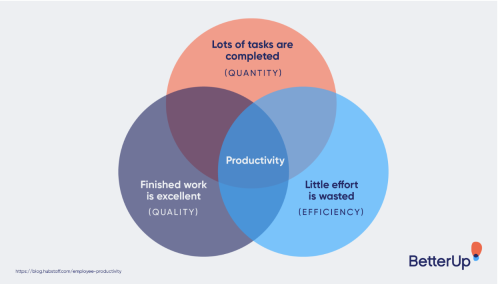
Engaged and happy employees are far more productive, and that increase in productivity leads to an average 21% increase in profits.
That’s why everyone always seeks the best ways to increase team productivity.
This common desire spans just about every industry.
Take property managers, for instance.
Property managers can easily use a service like PetScreening to collect information about pets on their property and manage pet policies in one place. A service like PetScreening improves property management productivity by streamlining pet and animal processes more effectively. This ultimately saves time and allows property managers to rake in more pet-related revenue.
Productivity initiatives can help improve your profits and ultimately increase the valuation of your business. That’ll be important if you decide to sell and need to find buyers for your business.
That productive team you’ve worked so hard to cultivate over the years can help improve your profits and sale price if you implement some of the initiatives we’ve outlined in the next section.
How can you increase team productivity?
Determine your current productivity level.
Before you can start improving your team’s productivity level, you must determine where you are and how you got there. You’ll need to understand the current productivity level within your organization to get a baseline understanding of where you need to be and how far of a journey that will be.
If your team lacks productivity, then you know this could be a longer, more drawn-out process. But they might already be very productive and satisfied and need some fine-tuning.
Without auditing your productivity levels, you’ll never know.
It’s a good idea to track time for two weeks, if not a month, to learn about your team’s time-tracking habits and how they spend their time.
This is also the only way to obtain more specific information on how each team member prefers to manage their time and how it reflects on the entire team. If you’re using a platform like Notion, you can use one of the best Notion widgets to start making time and scheduling changes and improvements based on your gathered data.
Set clear expectations
If your employees are going to be able to perform to your expectations, they have to know what those expectations are. But they can’t be expected to figure that out alone. Communicate with your team clearly and frequently to let them know what you want when you want it, and how you want it done.
It’s also a good idea to put this information in writing, whether in an employee handbook or a job description. You can better hold your employees accountable by communicating these expectations in a way you can easily reference. This is as true for processes as it is for goals and KPIs.
You can set clear and measurable objectives simply, where different KPIs are clear to all team members.
For instance, let’s say you have a mid-sized business that’s dedicated to teaching people how to invest. In this case, you’ll probably have different teams that advise on different industries or options. Giving these teams clear KPIs that can point them in the right direction will help increase their productivity and, ultimately, your profits.
Clearly define team roles
When shooting for more productive team members, it’s important to define the various roles within your organization clearly. Your employees need to understand what falls under their job descriptions as well as what everyone else around them does.
That way, when something crosses their desks that falls outside of their responsibilities, they can easily direct it to where it needs to go without wasting precious company time.
It’s the difference between “That’s not my job” and “That’s not something I’m qualified to handle, but I can send you to the right person on our team.”
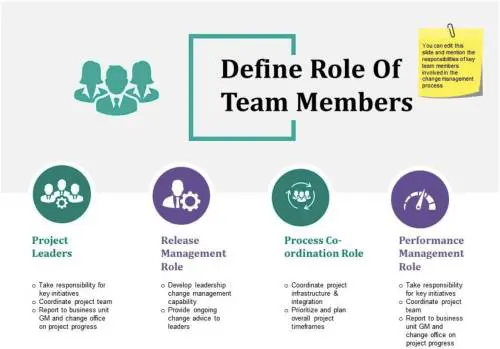
To recap, when you define roles and responsibilities across your team, every business employee knows exactly what they need to do and how they need to do it. They also deeply understand what everyone around them needs to do and can help hold those team members accountable.
Imagine you own an automotive parts company. Dividing your team according to their experience and knowledge areas would be essential. You can have an employee who’s an expert in assembling truck parts and another who knows everything related to truck accessories. Knowing their strengths will allow you to set objectives and goals for them, increasing productivity.
But if someone approaches the employee specializing in truck parts regarding accessories, they’ll know enough to direct that individual to the other member of your team who can better support them.
Be transparent
Your business processes shouldn’t be some mystery to unravel.
You must be incredibly transparent about what you expect and how the company operates. A bonus? This can help your team members feel less stressed and frustrated at work.
Again, happy employees are essential for continued efficiency, as they work harder and have more confidence on a day-to-day basis. Transparency has become increasingly crucial for attracting millennial and Gen Z workers, who are unwilling to play guessing games and participate in cloak-and-dagger working environments.
By improving your level of transparency on all levels, you’ll reduce workplace stress and create an atmosphere that thrives on open information, positivity, and productivity.
Delegate tasks
One way to improve organizational productivity is to know when to delegate tasks.
You and your team will have many multifaceted tasks to accomplish — but only some of these tasks will be necessary to drive the business forward. Others will be menial work that needs to be done but should never be prioritized over those more important tasks.
That’s why it’s vital to delegate work off the plates of those engaged in vital operations to other team members who aren’t as busy or outside contractors.
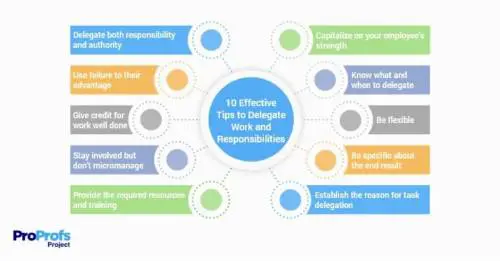
Something like clerical duties or content writing services can be outsourced to third-party agencies, freeing up a lot of productivity time for your essential workforce. Hint: If your company doesn’t specialize in it, consider outsourcing it.
Make processes simple
The fewer steps in a task, the less time it’ll take. That’s why ensuring that the processes you use to drive your company’s operations are streamlined and simple is essential.
In other words, aim to shorten the distance between the start and end of a task.
For example, suppose your team members need to open one platform to track their time, another to mark down customer notes, and another to close out tasks to move them along to the next person. In that case, you’re drawing out the process unnecessarily and detrimental to productivity.
Bottom line? Look for platforms that offer all-in-one solutions, and keep the number of hoops your team members have to jump through to an absolute minimum.
Invest in new technology
Part of making your processes simple comes down to the technology you use. Automation platforms have helped businesses improve productivity, entrusting smaller mindless tasks to artificial intelligence platforms that can complete these tasks quickly and on time every time.
This frees up human team members for more complicated and mentally stimulating tasks. Automation platforms can include a CRM, Calendar, time-tracking solution, project management tool, chatbot, and more.
Choosing a content management solution can also help you improve productivity by allowing your content and marketing teams to create, edit, and publish online content quickly and efficiently. A powerful CMS platform can make business processes more efficient and a team more productive.
And, of course, you can’t forget about security.
Malicious actors and cybercriminals aim to disrupt a company’s online operations, hurt its processes, and steal its data.
That’s why it’s important to have adequate security measures in place to help prevent unwanted intrusions.
It’s also important to educate your team members about potential cyber attack warning signs and the steps they can take to help mitigate their impact.
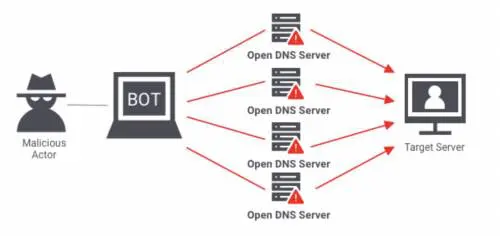
Investing in powerful security and encryption systems and educating team members on threat management, like DDoS attack prevention, can protect your business data and reputation. It can also avoid costly slowdowns that kill productivity.
Bring on new team members when needed
If your team is still struggling with productivity despite instituting the changes in this guide, the problem might be that your workforce isn’t large enough to tackle the volume of tasks you’re bringing in.
When you realize that your employees are overloaded with multifaceted tasks, it’s time to think about hiring new team members or outsourcing to freelancers.
If you have a strict hiring budget, consider hiring entry-level workers, such as students or minors, with little to no experience. Job-seeking minors are quite easy to find. Consider posting your employment opportunities on career boards specifically geared toward finding jobs for 17-year-olds.
You may soon cultivate employees with valuable skills if you allow them to grow with your team — one of the key pillars of building an inclusive workplace. Not to mention that younger workers inspire creativity, energy, and innovation.
If you opt for this route, consider optimizing the new hire onboarding process by including existing employees in the training and mentoring process. This may also help contribute to deeper, more meaningful relationships among employees, which can help motivate them to bring their best selves to work. Win-win-win.
Recognize successes
One of the best ways to improve employee morale (and therefore improve productivity and profits) is to call out and recognize small and large successes.
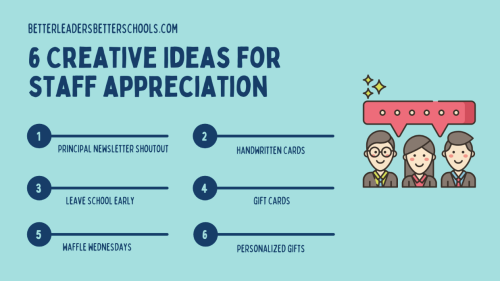
All too often, employees feel as though employers only recognize them for negative issues or failures. By calling your team members out when they succeed, you can create an atmosphere filled with positivity — where you celebrate victories, and team members encourage one another.
You can also incentivize success with prizes like a virtual pizza party, time off, or gifts.
Develop employees
One of the best ways to recognize success is to promote from within.
When your employees see that those who excel and meet their goals are rewarded with professional development plans that lead to more responsibility and higher salaries, they’ll want to give their all so that they can advance within your organization.
Wrap up
Productivity can be your ticket to profitability.
By investing heavily in initiatives that can improve your team’s profitability, you can create a more effective workforce tackling multifaceted tasks, meeting your customers’ needs, and creating a positive workplace environment.
To review, you can improve profitability for your organization by:
Determining your current level of productivity Setting clear expectations Defining team roles clearly Being transparent Knowing when to delegate tasks Simplifying your operational processes Investing in new technology Bringing in new team members when needed Recognizing successes Developing employees who excelRemember, when you invest in productivity, you invest in the future.
Following the advice in this guide can help set your business up for more efficiency and increased profits.
Published First on Calendar. Read Here.
Featured Image Credit: Photo by Cottonbro Studio; Pexels; Thank you!
![]()
Calendar
We are Calendar, trying to make the world a much more productive place. Check us out online at https://www.calendar.com.

 ShanonG
ShanonG 






























